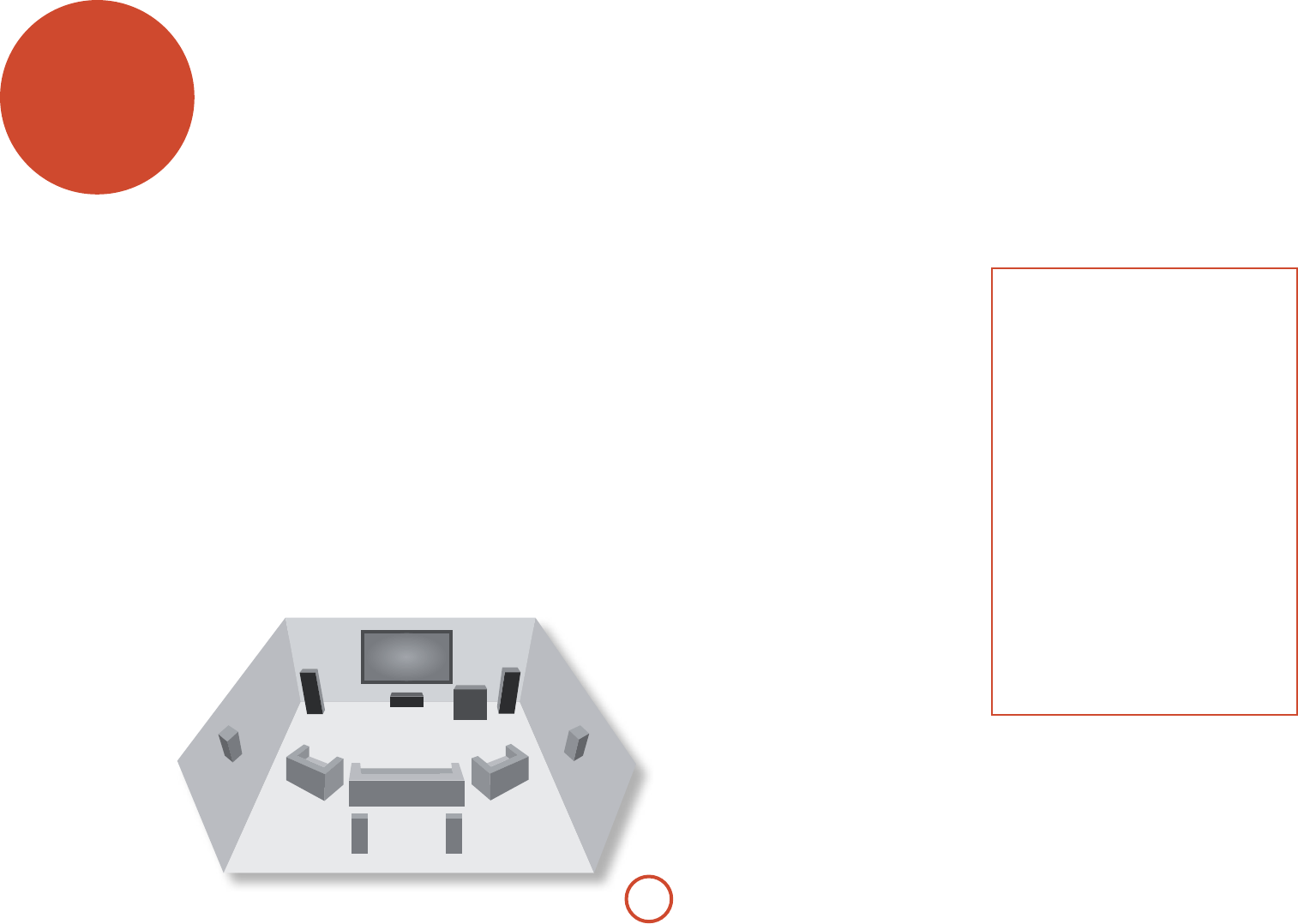Special offers from our partners!

Find Replacement BBQ Parts for 20,308 Models. Repair your BBQ today.

E-6
speakers
Speaker placement
e P777 allows connection of up to seven
loudspeakers. All speakers, with the exception of the
subwoofer, should be arranged around your normal
viewing/listening position (see diagram). e subwoofer
can be placed almost anywhere and we recommend
experimenting with it in various positions to obtain the
best result.
e closer you place a speaker to intersecting room
surfaces (corners, wall and ceiling, wall and oor),
the stronger the bass output. is can help bass-shy
speakers, but it can also add too much bass. Again, just
moving a speaker a few inches can oen make a big
dierence in sound.
Position your front le (L) and right (R) speakers
to achieve a good stereo image for normal musical
reproduction. If they are placed too close together there
will be a lack of spaciousness. Alternatively if they are
placed too far apart the stereo image will appear to have
a hole in the middle and will be presented in two
halves.
e centre speaker (C) allows for a more
realistic reproduction of dialogue and
centre sounds as well as wider and
better imaging for stereo eects
and background sounds for
home cinema use. Do not
compromise on the quality
of your centre speaker as it
carries all the dialogue for a
home cinema system.
SBL SBR
C
L
R
SW
SL SR
Notes on making speaker
connections
< Do not make any connections to any amplier
while it is switched on. We recommend that
your amplier is completely disconnected
from the mains supply before starting.
< Before switching your amplier on for the
rst time aer connecting to speakers, please
check all connections thoroughly. Ensure
that bare wires or cables are not touching
each other or the amplier’s chassis (which
could cause short circuits), and that you
have connected positive (+) to positive and
negative (–) to negative. Be sure to check the
wiring for both the amplier and the speaker.
< Aer making connections: switch the
amplier on, with the pre-amplier volume
set to a low setting. Select a source signal, then
gradually increase the volume to the required
listening level.
< If you are unsure as to how your system
should be connected, or need advice on
bi-wiring or bi-amping, please contact your
Arcam dealer who will be happy to help you.
Speaker wiring options
Single wiring
Single wiring is the conventional wiring method of
running a single cable per channel between the amplier
and the speaker; this is the easiest technique.
Bi-wiring
Bi-wiring is running two separate cables between the
amplier and each speaker, with one cable carrying
the low-frequency information, the other the higher-
frequency signals.
Bi-wiring can improve the sound of your system because
the separation of high- and low-frequency signal
currents into dierent speaker cables avoids distortions
caused by the dierent currents interacting with one-
another within a single cable, as occurs in single-wired
systems.
e P777 is designed to allow easy bi-wiring, but you
will need to connect to loudspeakers that provide
separate terminals for the two cables. Each speaker
must have two pairs of terminals; one pair labelled
HF
or ‘High Frequency’, the other pair labelled LF or ‘Low
Frequency’.
Bi-amping
Bi-amping is the separation of the amplication of
low- and high-frequency signals over two ampliers.
Bi-amping requires the use of two ampliers per
channel.
e surround le (SL) and right (SR) speakers
reproduce the ambient sound and eects present in a
multichannel home cinema system.
e surround back le (SBL) and surround back right
(SBR) speakers are used to add extra depth, a more
spacious ambience and sound localisation.
A subwoofer (SW) will greatly improve the bass
performance from your system. is is useful for
reproducing special cinema eects, especially where
a dedicated LFE (Low-Frequency Eects) channel is
available, as with Dolby Digital or DTS Digital Surround
encoded discs.


















